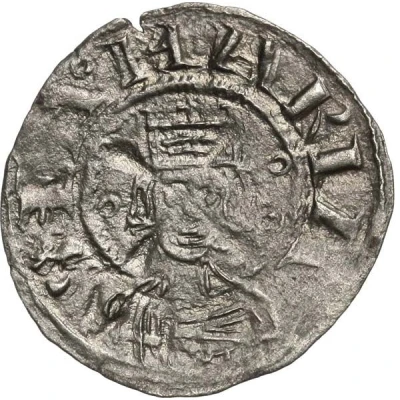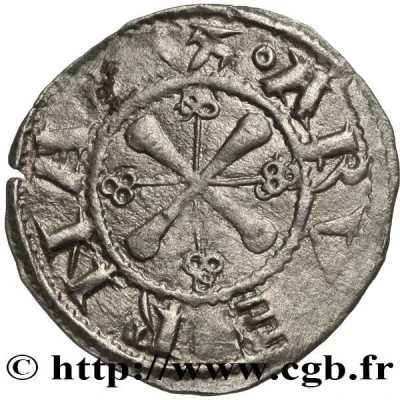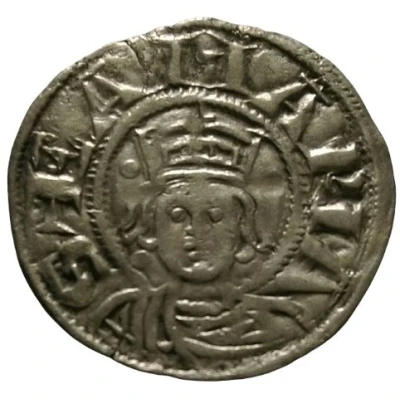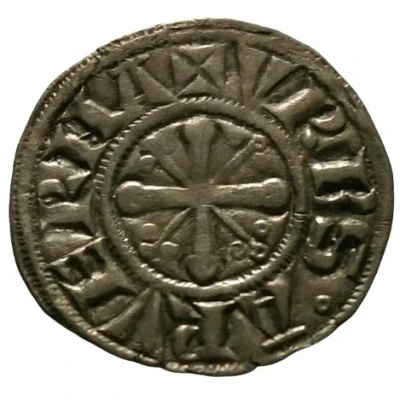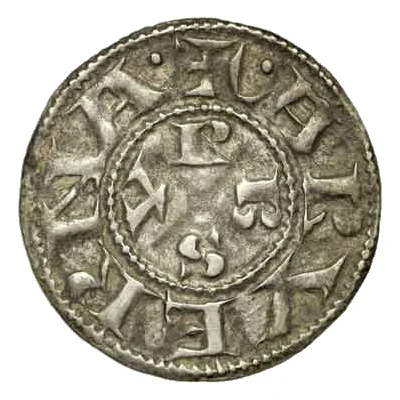
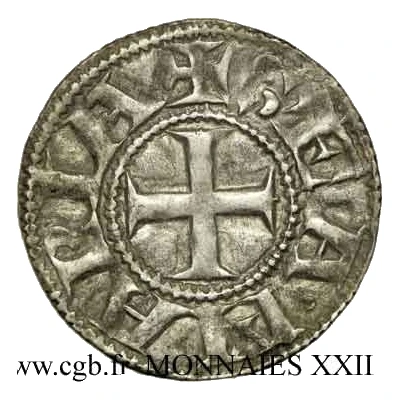

© CGB
Denier anonymous VRBS ND
| Billon | 1.17 g | 20.5 mm |
| Issuer | Bishopric of Clermont (French States) |
|---|---|
| Type | Standard circulation coin |
| Years | 1100-1200 |
| Value | 1 Denier (1⁄240) |
| Currency | Livre |
| Composition | Billon |
| Weight | 1.17 g |
| Diameter | 20.5 mm |
| Shape | Round (irregular) |
| Technique | Hammered |
| Orientation | Variable alignment ↺ |
| Demonetized | Yes |
| Updated | 2024-10-04 |
| Numista | N#176403 |
|---|---|
| Rarity index | 97% |
Reverse
Cross.
Script: Latin
Lettering: ✠ SEA • MARIA
Unabridged legend: Sancta Maria
Translation: Saint Mary.
Comment
In 928, the county of Auvergne was attached to the House of Poitiers. Guillaume V d'Auvergne, Count of Auvergne from 1032 to 1064, ceded the right of coinage to Bishop Rancon (1028-1052): "Let it be known to all the faithful of Auvergne that I Guillaume, count of Auvergne, cede for the salvation of my soul and that of my parents, to holy Mary, mother of God, of the cathedral of Auvergne and holy martyrs Agricol and Vital, the right to coin money, the workers themselves and everything related to it, in common ownership to the chapter... But if anyone wanted to create complications, may the wrath of Almighty God fall upon him, and may he be overwhelmed by every curse, and may he dwell in hell with the traitor Judas. This charter was established in year 13 of the reign of Henry, King of France. By virtue of this donation, the canons of Clermont began minting coins in 1044.Interesting fact
One interesting fact about this coin is that it was made of billon, which is an alloy of silver and copper that was commonly used in medieval Europe for coinage. The use of billon allowed for the production of coins that were more durable and resistant to wear and tear than coins made of pure silver or copper. Additionally, billon coins were often less expensive to produce than coins made of pure precious metals, which made them more accessible to a wider range of people.
